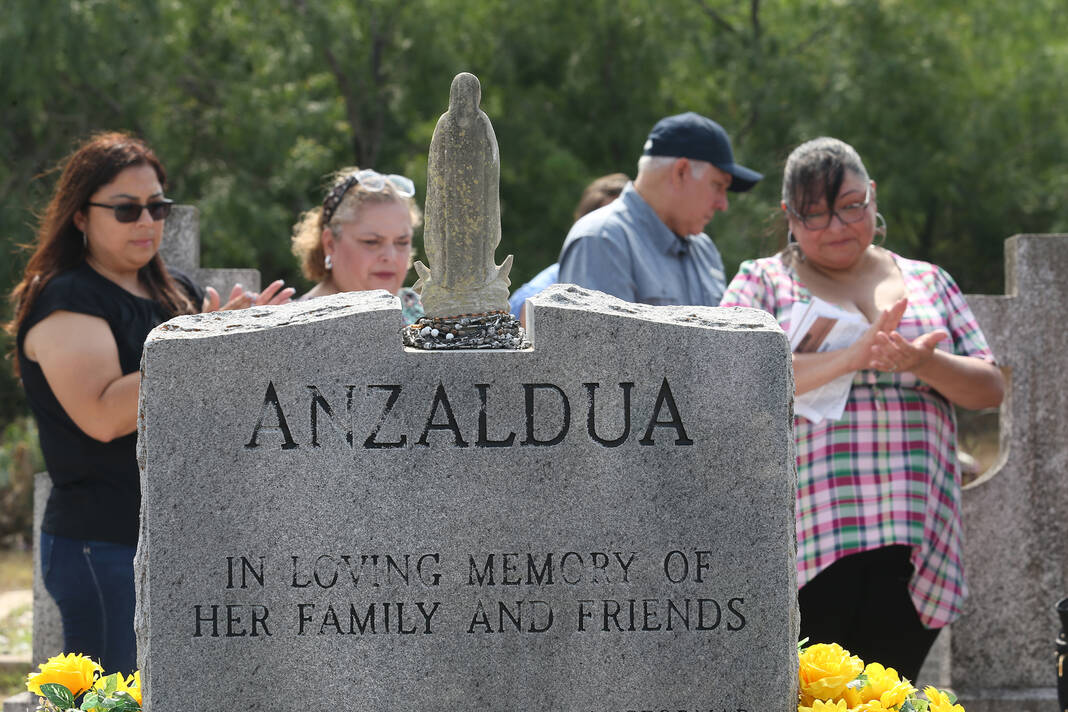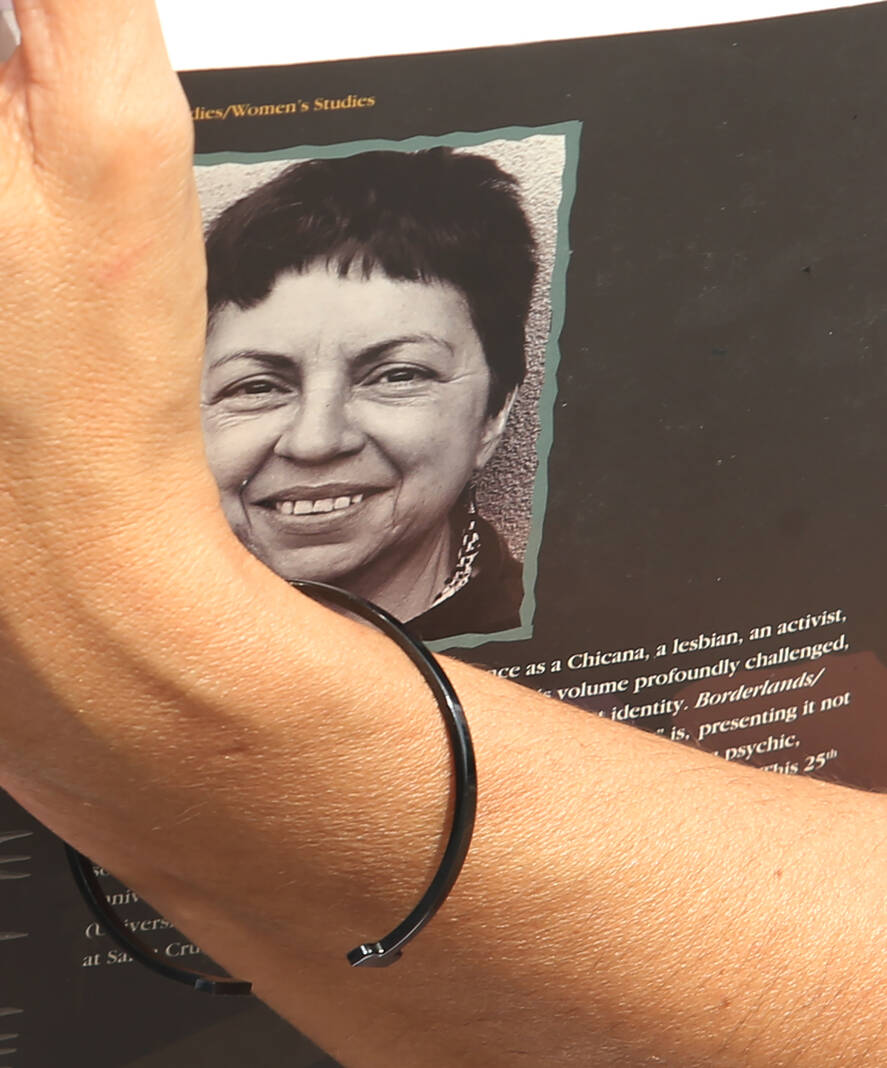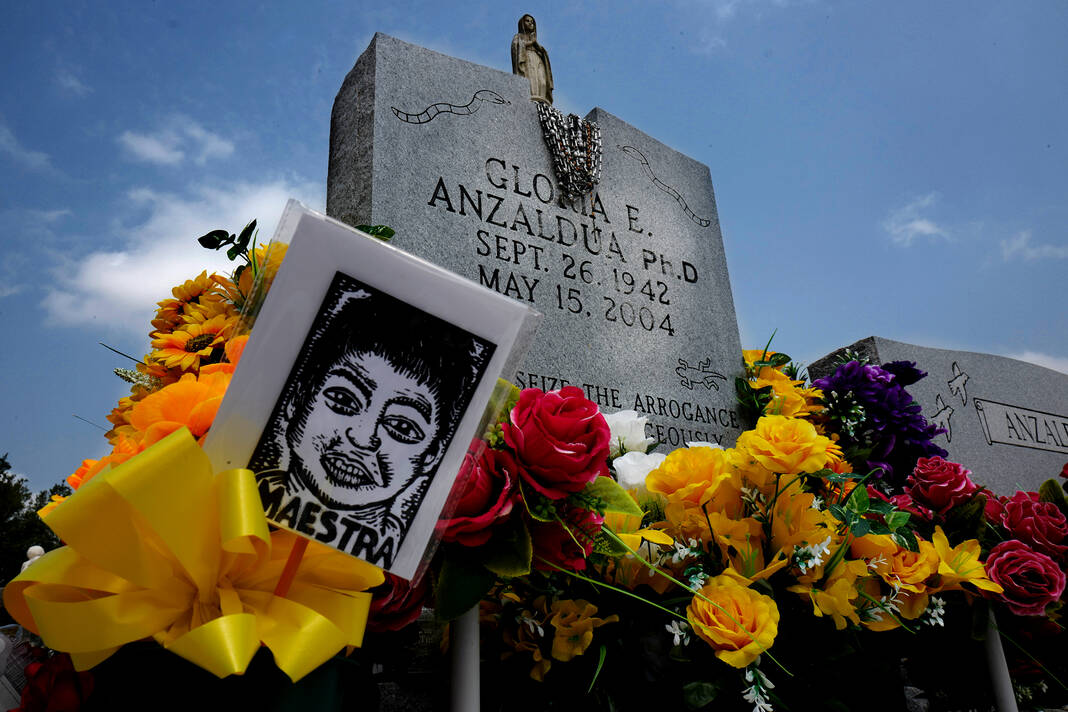|
Only have a minute? Listen instead
Getting your Trinity Audio player ready...
|
EDINBURG — In the 20 years after Gloria E. Anzaldúa died, her work has continued to influence people from all walks of life around the world.
Anzaldúa’s legacy and life were honored at El Retorno, an annual celebration attended by people near and far to share how Anzaldúa has impacted their lives and to highlight her significance.
Anzaldúa, born and raised in the Valley, was a queer Chicana poet, writer and feminist theorist. She was valedictorian of Edinburg High School in 1962 and graduated from legacy institution Pan American College in 1968.
Working as a teacher, she obtained a degree in English from the University of Texas at Austin. Anzaldúa is known for her contributions to the fields of feminism, Chicana and queer theory.
She is best known for her 1987 semi-autobiographical work, “Borderlands/La Frontera: The New Mestiza,” which contains a mixture of prose, poetry and alternates between Spanish and English.
The book examines the Chicano/Latino experience through the lens of gender, identity, race and colonialism, and draws inspiration from her youth living in the Valley.
The event included visiting Anzaldúa’s grave at the Valle de la Paz Cemetery in Hargill; a presentation and student panel at the UTRGV Ballroom; and a closing ceremony at a literary landmark at the Gloria E. Anzaldúa Plaza in front of the UTRGV Library, which was attended by Anzaldúa’s family.
Melissa Anzaldúa, the oldest niece of Gloria, said it is more than honorable to know that she is still remembered after 20 years.
“She still touches so many people to this day and it feels like as the winds blow, her presence is here amongst the people because the job is not complete, by no means. It carries on through so many other lives,” Melissa said.
In the last chapter of “Borderlands/La Frontera: The New Mestiza,” Anzaldúa ends it with a message to Melissa titled “Don’t Give In, Chicanita (para Missy Anzaldúa).”

Melissa emotionally read the message at the closing ceremony, a full circle moment for her.
“It reminded me of being little when I would go to school with her when she was teaching and she was making her way through college,” Melissa said. “ Her impression of things was always you know, you can do anything you put your mind to it. Little did I know then when I was 6 years old, that she was going to go on to do such great things. Her pursuing my interest in writing and poems was actually something that she was doing as a lifelong journey.”
One of main organizers behind the events, which started in 2008, is Emmy Pérez, a professor and the chair of the UTRGV Creative Writing Department.
Initially started as a one-time event, Pérez said it has been growing ever since due to people wanting to celebrate Anzaldúa’s legacy.
“I see some of the students in my classes, something clicks when they come to the events and they see how other people really love Anzaldúa’s work,” she said. “So they become more interested, so it’s really motivating to me. It doesn’t feel repetitive, we get different speakers all the time and then we just get the energy from the people who are coming that want to keep doing it. And her family has come for years and they always seem genuinely grateful.”
Another main organizer of the event was Alejandra Ramirez, an assistant professor in the UTRGV Department of Writing and Language Studies.
Loving Anzaldúa’s work since she was an undergraduate student and being the reason why she accepted a job at UTRGV, Ramirez said wanted to be part of the events honoring Anzaldúa since she got to the university.
“It was beautiful,” she said. “From the beginning being at the cemetery … you’re having such a spiritual experience with others that were equally invested in her work and it was very moving. And then being here on campus, her alma mater, I think was just as moving … it just made me feel like, somehow we were in that space, or she’s in that space with us.”
Starting the event at Anzaldúa’s grave, people came from places such as Corpus Christi, San Antonio, Florida and Mexico City to attend.
Walking side by side to her grave, people sang “Arriba mi gente” by Anzaldúa with people sharing who they are and why Anzaldúa and her work meant so much to them.

Yael Valencia Aldana, a Caribbean Afro-Latinx writer and poet, traveled all the way from Miami to attend the event. Aldana said she first encountered Anzaldúa’s work as a graduate student studying women, gender and sexuality studies at Florida Atlantic University.
Inspired by her work, specifically on identity, Aldana plans to publish a poetry book next year called “Black Mestiza.”
“When I read (Anzaldúa’s work), it was sort of all parts coming together as one,” she said. “The good, the bad, ugly everything in one person. So I felt like I had an anchor in this world and I had the right to speak my point of view without apologizing.”
Yolanda Godsey, a retired Texas A&M Corpus Christi professor, drove down with her grandson Samuel Godsey, a mechanical engineering student at TAMCC, to show him the importance of Anzaldúa and her work.
“It was very rewarding,” Yolanda Godsey said. “I love to see the participation of young people and when we were experiencing the dance … the way that they were uttering the elements. All of that comes to life when you read her readings.”
With a performance by the UTRGV dance team at the cemetery and the closing ceremony led by assistant professor Rebeca Gamborino, she said her students dissected Anzaldúa’s poem, “Now let us shift” and interpreted the work into a dance.
“We highlighted words and phrases that stood out to us and what they meant to us in our bodies,” Gamborino said. “From there, we just started piecing the piece together, adding gestures that represented certain words, certain facings that we did. We just really wanted to honor her words and she writes so much about being in the body and it’s so descriptive and lively, that it’s easy to just set movement to it.”
Alma López, a Mexican-born queer Chicana visual artist based in Los Angeles was the event’s keynote speaker and spoke about Anzaldúa’s impact.
Surprised but honored to be invited to the event, her presentation focused on reflecting on her experiences with Anzaldúa’s work and even meeting her a handful of times.
“My connection to Anzaldúa is the creation of these images and basically the creation of a visual language,” López said. “Because I think as artists, we communicate in images and a lot of those images are very coded images.”




